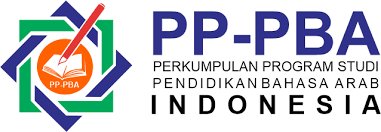Al-Taghayyurāt al-Ṣawtīyyah bayna al-Lughatayn al-ʻArabīyyah wa al-Tāmiliyyah: Dirāsah Taqābuliyyah
DOI:
https://doi.org/10.30983/huruf.v4i1.8311Keywords:
Phonoogical Changes, Arabic, TamilAbstract
Sounds affect each other. It brings to change one of the sounds. The phonological changes that occur as a result of the influence of sounds on some of them are; assimilation, dissimilation, and replacement. The question "Are there similarities in phonological changes between Tamil and Arabic languages which are from two different language families" is the research problem. Thus, this research aims to identify the similarities and differences in phonological changes among them. This research uses contrastive methodology under the descriptive analysis to find out the similarities and differences among them. Secondary data were collected from books, research and previous studies. At the end of the study, the researchers concluded that the phenomenon of assimilation in the Arabic language often exists between the sounds of a single word, while in the Tamil language this phenomenon occurs between the two words when they are linked to create a new word from them. It is divided into several in the two languages in terms of the characteristics of the sounds, and in terms of the degree of effect, place, and the relationship between the influencer and the affected; among them, assimilation of Arabic consonant is divided into six types, such as complete, partial, contiguous, non-contiguous, progressive and regressive. There are five types in the Tamil language, such as progressive, regressive, complete, contiguous, and non-contiguous. Assimilation of Tamil vowels is in three forms: assimilation of vowel with a vowel, assimilation of consonant with a vowel, assimilation of vowel with consonant while in the Arabic language it occurs in four forms: assimilation of vowel with a vowel, assimilation of semi-vowel with a vowel, assimilation of semi-vowel with a consonant, assimilation of vowel with a semi-vowel. When comparing the dissimilation in Arabic and Tamil, this term in both languages indicates one thing. It is the difference between the influenced sound and the one affecting it, in addition to the fact that it occurs in the Arabic language in a specific system and in specific cases. But no rules and order were followed for this phenomenon, nor were there any types for it in the Tamil language even though it exists in the Arabic language. Learners face many problems in identifying phonological changes without comparative knowledge of their mother tongue and adequate applications.
References
ʻAbd Allāh, ʻĀdil al-Shaykh, Muqaddimah fī ʻilm al-aṣwāt. 2nd edn (Al-Jāmiʻah al-Islāmīyah al-ʻĀlamīyah, Mālīziyā, 2009).
ʻAbd al-Rashīd Khān ʻAbd al-Sattār, waḍʻ al-lughah al-ʻArabīyah bi-al-madāris al-ʻArabīyah al-Islāmīyah fī Sirīlānkā, (Risālat al-duktūrāh fī al-lughah al-ʻArabīyah, Jāmiʻat al-Sūdān lil-ʻUlūm wa-al-Tiknūlūjiyā, 2015), p38-40.
Aḥmad Mukhtār ʻUmar, dirāsah al-Ṣawt al-lughawī, (al-Qāhirah : ʻĀlam al-Kutub, 1976).
Alfozan, Abdulrahman Ibrahim. (1989). Assimilation in Classical Arabic – A Phonological Study. University of Glasgow.
al-Ḥājj, Ḥanafī Dawlat. (2004). ʻilm al-ṣarf almtqdm lʼghrāḍ ʻilmīyah. Mālīziyā: al-Jāmiʻah al-Islāmīyah al-ʻĀlamīyah.
al-Marṣafī, ʻAbd al-Fattāḥ. (1982). Hidāyat al-Qārī ilá tajwīd kalām al-Bārī. Ṭ1. al-Mamlakah al-Saʻūdīyah al-ʻArabīyah.
Al-Maṣārwah, Jazāʼ Muḥammad, al-mumāthilah fī al-ʻArabīyah: ruʼyah jadīdah. Dirāsāt, al-ʻUlūm al-Insānīyah wa-al-Ijtimāʻīyah, 44.3 (2017). <https://archives.ju.edu.jo/index.php/hum/article/download/10427/7910/29799>.
al-Rājiḥī,ʻAbd, Al-taṭbīq al-ṣarfī, (Dār al-Nahḍah, Bayrūt, 1973).
Anīs, Ibrāhīm. (1975). al-aṣwāt al-lughawīyah. ṭ5. Miṣr: Maktabat al-Anjlū al-Miṣrīyah.
Cīṉivācaṉ, Rā., Moḻi oppiyalum varalāṟum. 4th edn. (Intiyā Ceṉṉai aṇiyakam, 1999).
Cīṉivācaṉ, Rā., Moḻiyiyal., (Intiyā Ceṉṉai aṇiyakam, 1980).
Cuppiramaṇiyaṉ, ci. (1998). Pēccoliyiyal. Pati.1. Tamiḻnāṭu: Nāṭṭār vaḻakkāṟṟiyal āyvu maiyam.
Ganesan, S.N . (1975), Contrastive Grammar of Hindi and Tamil. India: University of Madras.
Ghānim Qaddūrī al-Ḥamad, al-Madkhal ilá ʻilm al-aṣwāt, (al-Riyāḍ : Maktabat al-Rushd, 2024).
Ḥalīmah, Al-sulṭānah, ‘Taʻrifu ʻalá al-lughah altāmlyh’. (2019)
Ḥasan Ghāzī al-Saʻdī, "al-mukhālafah al-ṣawtīyah fī alqrʼān-tafsīruhā bayna al-qudamāʼ wa-al-muḥaddithīn", Majallat Midād al-adab, (al-Jāmiʻah al-ʻIrāqīyah : Kullīyat al-Ādāb, 2020m) al-ʻadad al-khāṣṣ bālmʼtmrāt 2019-2020, p236-254.
Hishām wa-ākharūn. (2017). istiʻmāl al-Rawābiṭ fī al-lughah al-ʻArabīyah ladá dārsyhā klghh thānīyah ʻalá mustawá al-Jāmiʻah namūdhajan ṭullāb al-Sunnah al-ūlá min Jāmiʻat Janūb Sharq Sirīlānkā. Jāmiʻat Janūb Sharq Sirīlānkā.
Ḥusām al-Dīn. (1985). uṣūl turāthīyah fī ʻilm al-lughah. al-Qāhirah: Maktabat al-Anjlū al-Miṣrīyah.
Husam, M.S.M., Munas, M.H.A. & Aliyar, A.B.M.‘Istiʻmāl al-Rawābiṭ fī al-lughah al-ʻArabīyah ladá dārsyhā klghh thānīyah ʻalá mustawá al-Jāmiʻah namūdhajan ṭullāb al-Sunnah al-ūlá min Jāmiʻat Janūb Sharq Sirīlānkā’ in South Eastern University Arts Research Session (South Eastern University of Sri Lanka, 2017), < http://ir.lib.seu.ac.lk/handle/123456789/3231>.
Ibn Jinnī, Abū ʻUthmān, Al-Khaṣāʼiṣ. (Bayrūt ʻĀlam al-Kutub, 2006).
Ibrāhīm Anīs, al-aṣwāt al-lughawīyah, (al-Qāhirah : Maktabat al-Anjlū al-Miṣrīyah, 1999).
K. Karunaakaran & V.Jeya, Mozhieyal, (Chennai: Kumaran Printers, 1997).
Karuṇākaraṉ, ki., Jeyā, va. (1997). Moḻiyiyal. Cēṉṉai: Kumaraṉ patippakam.
Lado, Robert. (1976). Linguistics across cultures. An Arbor: The University of Michigan.
Nuḥmāṉ, em.Ē. (2002, A). Ārampa, iṭainilai vakuppukaḷil tamiḻ moḻi kaṟpittal - oru moḻiyiyal aṇukumuṟai. Koḻumpu: Koḻumpu tamiḻc caṅkam.
Nuḥmāṉ, M.A., , Aṭippaṭait tamiḻ ilakkaṇam. 3rd edn, (Koḻumpu Pūpāla ciṅkam puttakacālai, 2013).
S. Supiramaniyan, Pechcholieyal, (Tamil Nadu: Folklore Resources and Research Centre, 1998).
Ṣādfh bint Muḥammad Qāsim, dirāsah taqābulīyah bayna al-lughatayn al-ʻArabīyah wāltāmlyh ʻalá mustawá alʼṣwt maʻa taṣmīm rumūz aṣṭlāḥyh fī al-lughah altāmlyh lil-aṣwāt al-ʻArabīyah, (Risālat mājistīr fī Kullīyat al-Ādāb, Jāmiʻat fyrādānyā, Sirīlānkā, 2014), p2-5.
Ṣādfh Muḥammad Qāsim wfrwn ʻAbd al-Raḥīm, mhārh al-Mufradāt al-ʻArabīyah ladá ṭalabat Qism al-lughah al-ʻArabīyah fī Jāmiʻat Janūb Sharq Sirīlānkā, al-Muʼtamar al-ʻĀlamī al-khāmis, (Jāmiʻat Janūb Sharq Sirīlānkā bsrylānkā, 2015), p208.
Sainulabdeen, Z. M., & Shathifa, M. C. S. (2021). Nizhâm al-Jumal Baina al-Lugatain al-Arabiyyah wa al-Tâmiliyyah: Dirâsah Taqâbuliyyah (Sentence Pattern between Arabic and Tamil Languages: A Contrastive Study). Loghat Arabi: Jurnal Bahasa Arab dan Pendidikan Bahasa Arab, 2(2), 105-126
Salih, Abeer Hadi. (n.d.). Sound Assimilation in English and Arabic. : A contrastive study. Journal of the college of languages, issue (25).
Sāmī, ʻAwaḍ wa-Ḥusayn, Ṣalāḥ al-Dīn Saʻīd. (2009). al-taghayyurāt al-ṣawtīyah wa-qawānīnihā (al-mafhūm wa-al-muṣṭalaḥ. Majallat Jāmiʻat Tishrīn lil-Buḥūth wa-al-Dirāsāt al-ʻIlmīyah. 31 (1), 131-135.
Seenivasan, Mozhieyal, (India: Chennai Aniyagam, 1980).
ʻUmar. (1997). dirāsah al-Ṣawt al-lughawī. ṭ3. al-Qāhirah: ʻĀlam al-Kutub.
Wāfī. (2004). ʻilm al-lughah. ṭ9. Miṣr: Nahḍat Miṣr lil-Nashr wa-al-Tawzīʻ.
Yāsīn, Raslān Banī, ‘Al-mumāthilah: dirāsah ṣawtīyah tashkīlīyah’. Ḥawlīyat Jamʻīyat Kullīyāt al-Ādāb, 1.1 (2004). p. 135-152 <https://search.emarefa.net/detail/BIM-72023>.
Yāsīn, Raslān Banī. (2004). dirāsah ṣawtīyah tashkīlīyah. Majallat Ittiḥād al-jāmiʻāt al-ʻArabīyah. 30, 132-135.
Zaynab, A.Ali. (n.d.). A phonological Study of English and Arabic Assimilation: A contrastive study. Journal of the college of languages, issue (25).
Zunoomy, M. S., & Shathifa, M. C. S. (2022). ‘Anâshir al-Jumal baina al-Lughataini al-‘Arabiyyah wa at-Tâmiliyyah (Dirâsâh Taqâbuliyyah). International Journal of Arabic Language Teaching, 4(01), 56-68.
Zunoomy, M. S., Munas, M. H. A., & Israth, U. (2021). Taḥaddiyāt tarjamat adawāt al-rabṭ bayna al-lughatayn al-Injilīzīyah wa-al-ʻArabīyah. 8th International Symposium, Faculty of Islamic Studies & Arabic Language, South Eastern University of Sri Lanka. http://192.248.66.13/handle/123456789/5668
Zunoomy, M.S. & Munas, M.H.A. (2021). Nominal and Verbal Sentences & their Aspects: a contrastive linguistics study between Tamil & Arabic Languages. International Journal of Research and Analytical Reviews – IJRAR, 8(3), 540-544. http://www.ijrar.org/IJRAR21C1701.pdf
Downloads
Published
Issue
Section
Citation Check
License
Copyright (c) 2024 Mohammed Cassim Sithy Shathifa, Asem Shehadeh Ali

This work is licensed under a Creative Commons Attribution-ShareAlike 4.0 International License.
Authors who publish with this journal agree to the following terms:
- Authors retain copyright and grant the journal right of first publication with the work simultaneously licensed under a Creative Commons Attribution-ShareAlike 4.0 International Licensethat allows others to share the work with an acknowledgment of the work's authorship and initial publication in this journal.
- Authors are able to enter into separate, additional contractual arrangements for the non-exclusive distribution of the journal's published version of the work (e.g., post it to an institutional repository or publish it in a book), with an acknowledgment of its initial publication in this journal.
- Authors are permitted and encouraged to post their work online (e.g., in institutional repositories or on their website) prior to and during the submission process, as it can lead to productive exchanges, as well as earlier and greater citation of published work (See The Effect of Open Access).










